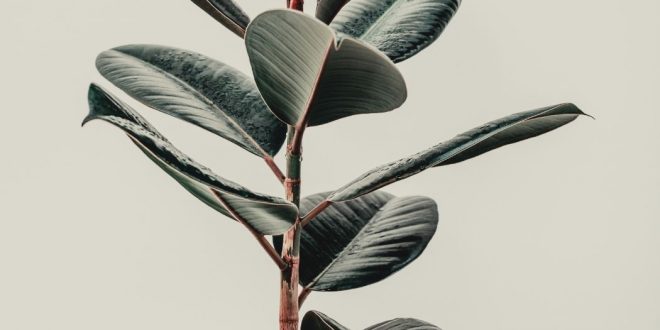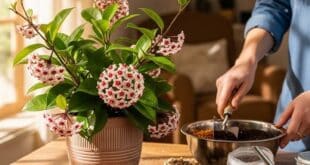Introduction
Rubber plant care is essential for keeping this popular indoor plant healthy and thriving. Known for its striking, glossy leaves and air-purifying qualities, the Rubber plant (Ficus elastica) is a favorite choice for both beginner and experienced plant enthusiasts. In this article, we’ll explore everything you need to know about growing and maintaining this beautiful plant indoors, including tips on propagation, watering, sunlight, and troubleshooting common issues.
About the Rubber Plant (Ficus Elastica)
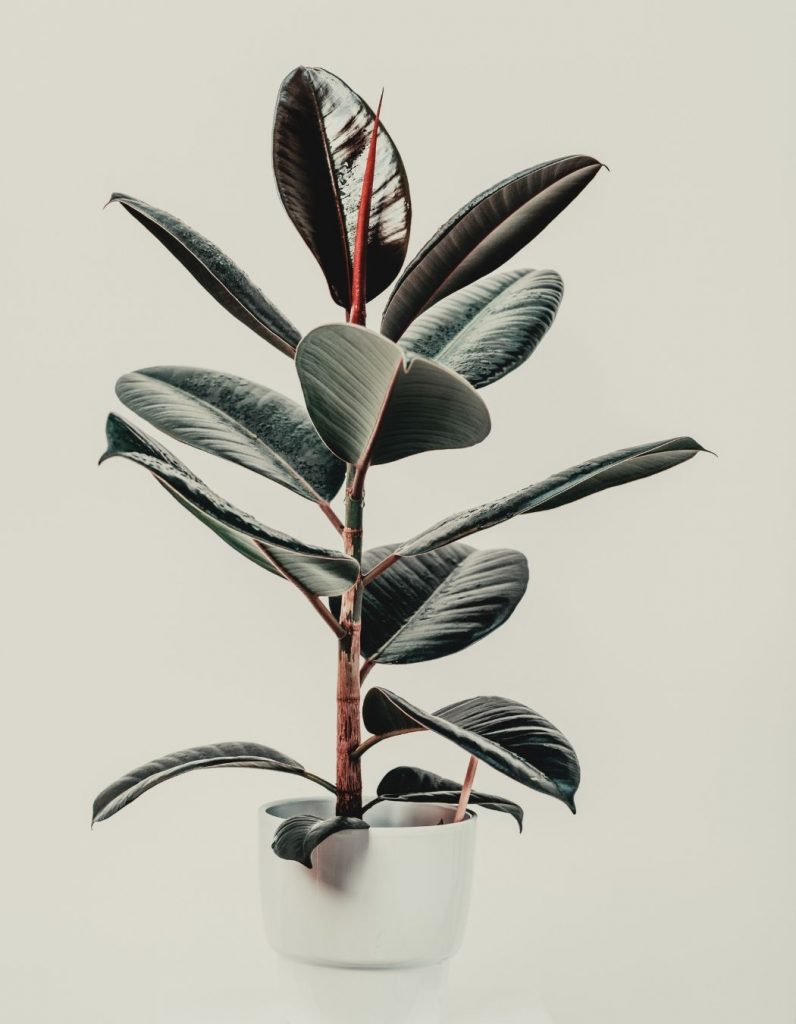
Native to tropical regions of Asia, particularly India, the Rubber plant is a versatile houseplant that can adapt to various indoor environments. In its natural habitat, it can grow up to 196 feet tall with thick trunks, but indoors, it typically reaches a manageable height of 6-10 feet, depending on care. With proper Rubber plant care, you’ll enjoy its stunning foliage and air-purifying benefits for years to come.
Popular Varieties of Rubber Plant
- Robusta: Features large, bold green leaves.
- Tineke: Known for its variegated cream and green leaves.
- Ruby: Displays striking red and pink tones.
- Melany: Compact with dark, glossy leaves.
- Abidjan: Deep green leaves with a shiny finish.
Rubber Plant Care: Step-by-Step Guide
To ensure your Rubber plant thrives, follow these detailed care instructions:
Light Requirements

Rubber plants prefer bright, indirect sunlight. While they can tolerate low light conditions, their growth may slow, and their leaves may lose vibrancy. Avoid direct sunlight, as it can scorch the leaves. For optimal Rubber plant care, place your plant near a window with filtered light or in a semi-shaded area.
Watering and Humidity
Proper watering is a key aspect of Rubber plant care:
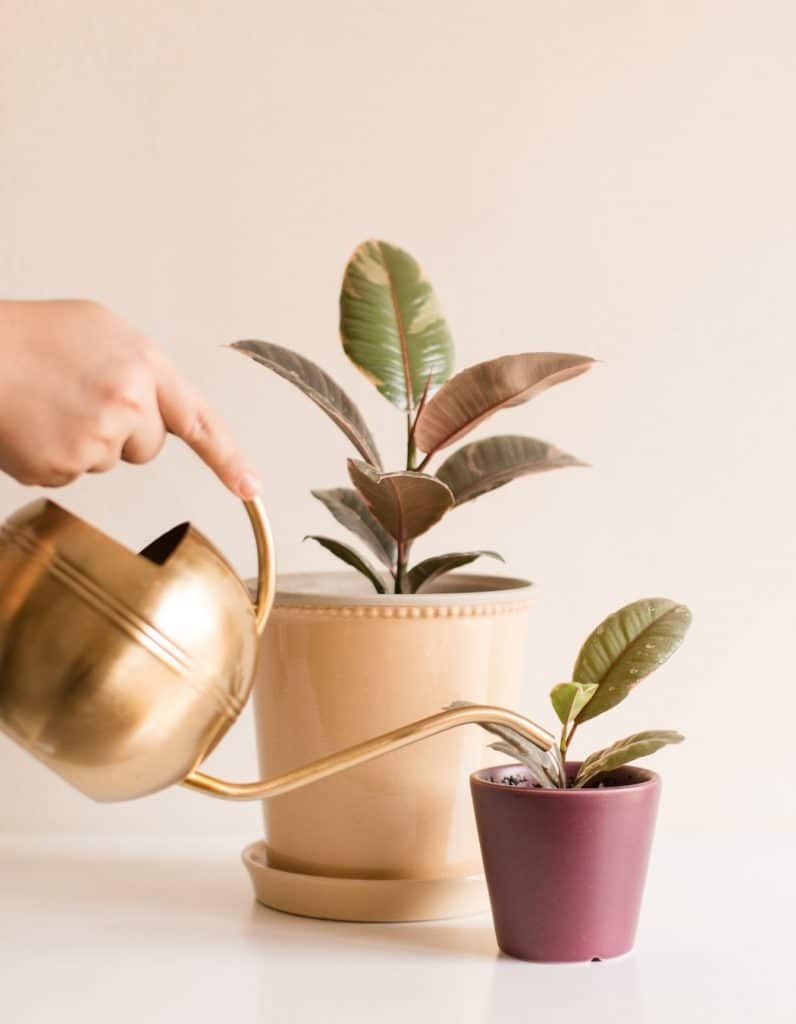
- Watering: Check the soil before watering. If the top inch feels dry, it’s time to water. Overwatering can lead to root rot, so ensure the pot has proper drainage. Water more frequently during summer and reduce watering in winter.
- Humidity: Rubber plants love humidity. If the air in your home is dry, mist the leaves regularly or use a humidifier. Wiping the leaves with a damp cloth not only increases moisture but also removes dust, keeping the plant looking vibrant.
Temperature
The ideal temperature range for Rubber plants is 15-24°C. They dislike sudden temperature changes and should not be exposed to temperatures below 12°C. Keep them away from drafts, air conditioning vents, and heaters for optimal growth.
Soil
Use a well-draining, fertile soil mix for your Rubber plant. You can enhance the soil’s permeability by adding sand, perlite, or pumice. Avoid acidic soils, as they can hinder the plant’s development.
Fertilizer
During the growing season (spring and summer), feed your Rubber plant with a diluted, organic liquid fertilizer every 4-6 weeks. Fertilizing helps promote healthy growth and vibrant foliage. Avoid over-fertilizing, as it can damage the roots.
Pruning
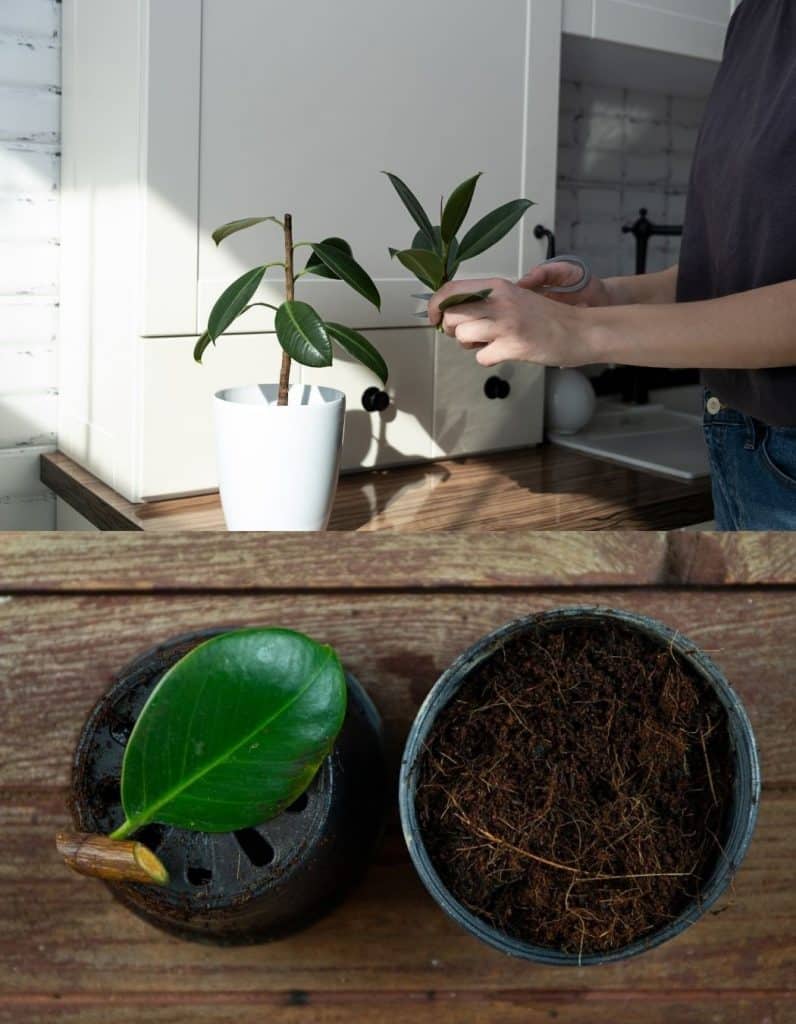
Pruning helps maintain the shape and size of your Rubber plant. Trim back overgrown branches or remove yellowing leaves as needed. Be cautious of the sap released during pruning, as it can irritate the skin. Pruning can also encourage new growth, making it an essential part of Rubber plant care.
Propagation
Propagating a Rubber plant is simple and rewarding:
- Cut a healthy branch about 10-12 inches long.
- Allow the cut end to dry for a few hours to prevent excessive sap loss.
- Apply rooting hormone to the cut end and plant it in a soil mix containing sand and compost.
- Keep the soil moist and maintain high humidity. Roots typically form within 4-6 weeks.
Repotting
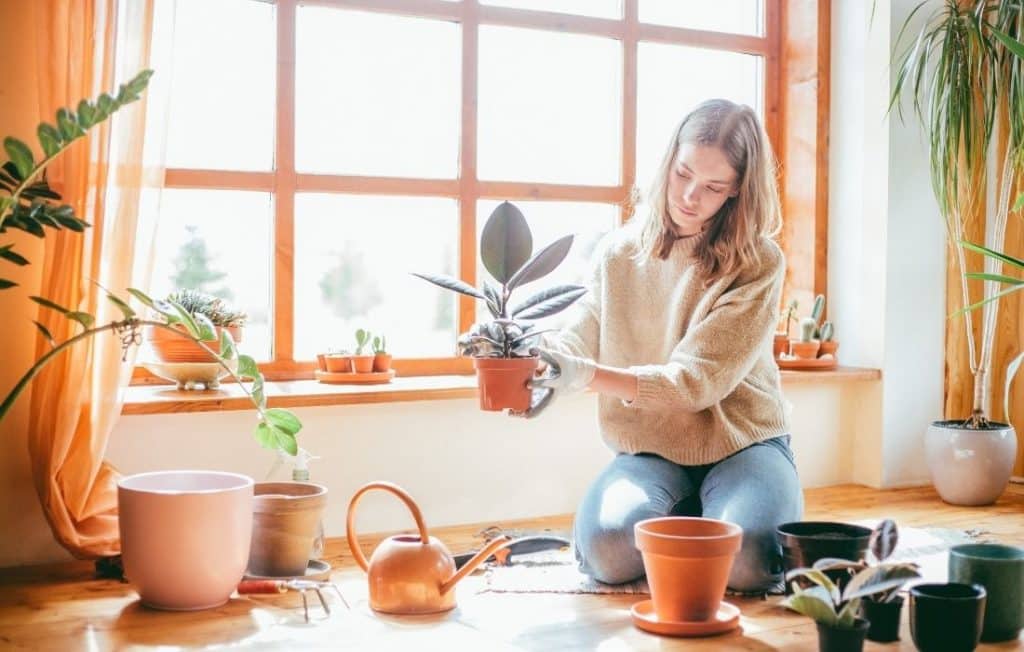
As your Rubber plant grows, repot it annually into a larger pot to accommodate its expanding root system. Spring is the best time for repotting. Ensure the new pot has drainage holes to prevent waterlogging. Regular repotting is a vital part of Rubber plant care to support healthy growth.
Common Pests and Diseases
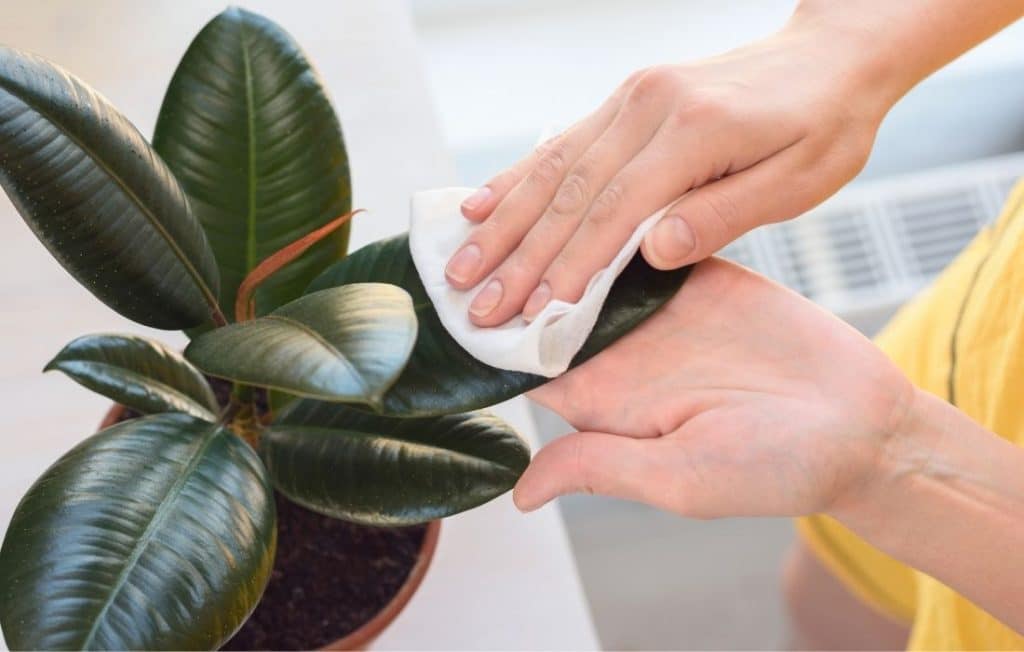
- Pests: Mealybugs, spider mites, and scale insects are common pests that can affect Rubber plants. Use neem oil or insecticidal soap to treat infestations.
- Diseases: Overwatering can lead to root rot and fungal infections. If you notice blackened leaves or mushy roots, remove the affected parts and repot the plant in fresh soil.
Benefits of Rubber Plant Indoor
Incorporating a Rubber plant into your indoor space offers several benefits:
- Air Purification: Rubber plants are excellent natural air purifiers, removing toxins and improving indoor air quality.
- Aesthetic Appeal: Their glossy, vibrant leaves add a touch of elegance to any room.
- Low Maintenance: With proper Rubber plant care, they are easy to maintain, making them perfect for busy plant lovers.
Troubleshooting Common Rubber Plant Problems
Even with the best Rubber plant care, issues can arise. Here’s how to address common problems:
- Drooping Leaves: Indicates underwatering. Increase watering frequency and mist the leaves.
- Yellowing Leaves: Often caused by overwatering. Check the soil and adjust your watering schedule.
- Leaf Shedding: A sign of insufficient light or exposure to drafts. Move the plant to a brighter, sheltered spot.
- Brown Edges: Result from low humidity or overwatering. Mist the leaves and ensure proper drainage.
- Blackened Leaves: A symptom of root rot. Remove the plant from its pot, trim rotten roots, and repot in fresh soil.
Advanced Rubber Plant Care Tips
- Use a bamboo stake or lath to support the plant as it grows taller.
- Rotate the pot occasionally to ensure even growth and exposure to sunlight.
- Avoid placing the plant near air conditioners or heaters, as they can cause sudden temperature changes.
- Regularly inspect the plant for pests and treat them promptly to prevent infestations.
Why Choose Rubber Plant for Indoor Spaces?
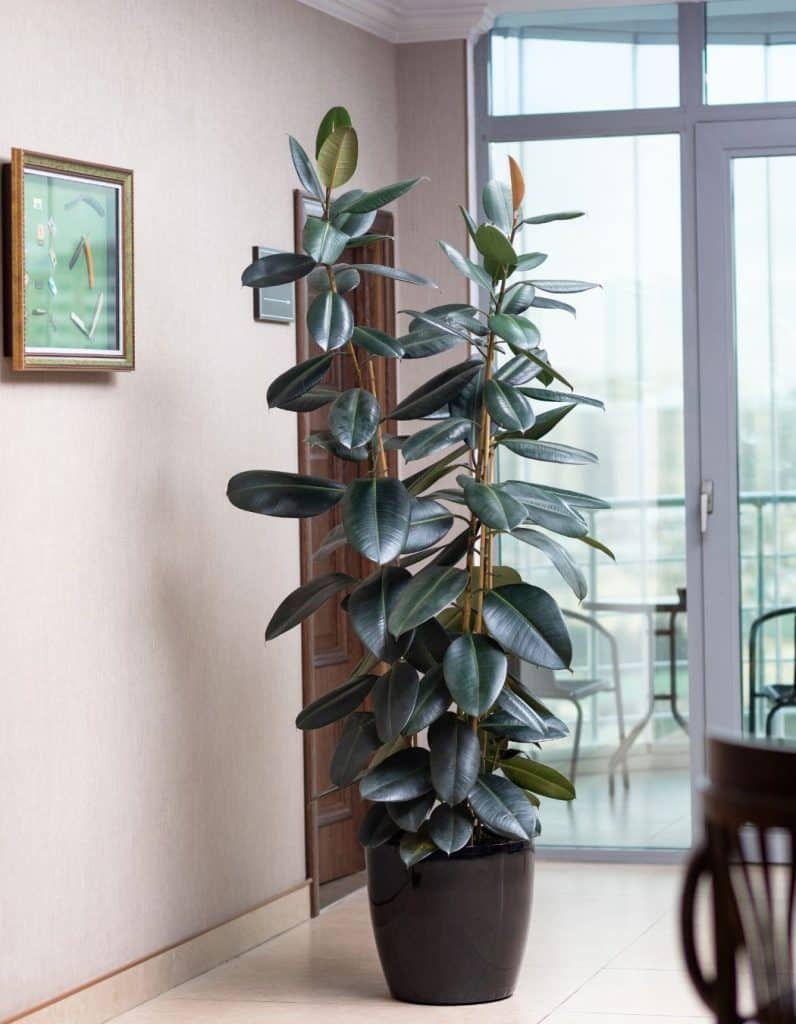
The Rubber plant is not just a decorative element; it’s a functional addition to your home. With proper Rubber plant care, it can thrive in various indoor environments, improve air quality, and create a calming atmosphere. Whether you’re a seasoned plant enthusiast or a beginner, the Rubber plant is a reliable and rewarding choice.
Final Thoughts on Rubber Plant Care
Caring for a Rubber plant is straightforward when you understand its needs. By following the tips outlined in this guide, you can enjoy a healthy and vibrant Rubber plant that enhances your indoor space. Remember, the key to successful Rubber plant care is consistency—monitor its water, light, and temperature requirements, and you’ll be rewarded with a thriving plant.
For more tips on indoor plant care and air-purifying plants, explore our other articles and discover how to create your own indoor jungle! If you liked this article EASY TO CARE INDOOR PLANTS may interest you

